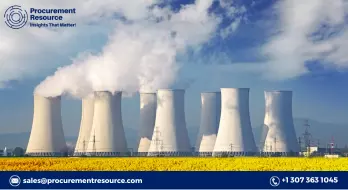Researchers have Accomplished an Important Milestone on the Journey to Nuclear Fusion Energy

On Wednesday, US government scientists said they had made a significant step toward making nuclear fusion — the phenomenon that fuels stars – a sustainable energy source for humanity. The experts used the world's most giant laser to compel fusion fuel to heat itself far beyond the temperature they shot into it for the first time, establishing a situation known as a burning plasma, which represented a step toward self-sustaining fusion energy.
The energy generated was minimal – roughly the same as nine nine-volt batteries used to operate smoke alarms and other gadgets. The trials, which took place at a Lawrence Livermore National Laboratory facility in California, were a defining moment in the decades-long attempt to acquire fusion energy; however, the experts stressed that more work is needed in the coming years.
Nuclear fusion, which is the merging of atomic nuclei to liberate energy, was used in the tests to achieve the self-heating of substances in a plasma state. Along with solid, liquid, and gas, plasma is one of the four states of matter.
According to Alex Zylstra, an experimental physicist at Lawrence Livermore National Laboratory, which is part of the US Department of Energy, and lead author of the study published in the magazine Nature, if anyone wants to start a campfire, they would like to get the fire hot enough that the wood can maintain itself burning. He concluded that this is an excellent parallel for a burning plasma, where the fusion is starting to become self-enduring.
To carry out the process, the experts aimed 192 laser beams at a tiny target holding a capsule more petite than a tenth of an inch in diameter (approximately 2 mm) packed with fusion fuel made up of deuterium and tritium plasma — two isotopes, or forms, of hydrogen.
When the nuclei of deuterium and tritium fuse at extremely high temperatures, a neutron and a positively charged particle known as an "alpha particle" – made up of two protons and two neutrons – appear, and energy is emitted.
Zylstra stated that for the fusion to work, they need to heat the fuel tremendously hot - like a typical fire, but they need around a hundred million degrees (Fahrenheit) for fusion.
They have been able to induce fusion reactions in tests for decades by applying a lot of heat to the fuel, but that isn't good enough to get net energy from fusion. He added that for the first time, fusion reactions in power produced the majority of the heating - fusion is beginning to take precedence over the heating they conducted. This new regime is called a flaming plasma.
Fusing promises abundant energy without pollution, radioactive waste, greenhouse gas emissions, distinctively fossil fuel combustion, or the fission method used in existing nuclear power plants. Instead, fusion energy is created by fusing atoms, much as it does within stars like our sun.
A fusion energy future is also being pursued by private-sector projects, which include hundreds of firms and organisations, with even some oil corporations investing. Annie Kritcher of Lawrence Livermore National Laboratory, the leading designer for the tests at the National Ignition Facility in 2020 and 2021 and the first author of a companion study published in Nature Physics, stated that fusion energy is the holy grail of clean, unlimited energy.
Zylstra explained that fusion produced around ten times the energy used to heat the fuel in these studies, but less than ten percent of the total laser energy since the process is still inefficient. Kritcher added that the laser was only employed for around ten billionths of a second in each experiment, with fusion production lasting 100 trillionths of a second.
The development, according to Zylstra, is encouraging.
Making fusion a reality is a massively complicated scientific problem that will need significant investment and ingenuity to make it practical and cost-effective, Zylstra added. For fusion to be a practical energy source, he views it as a decadal-scale task.



